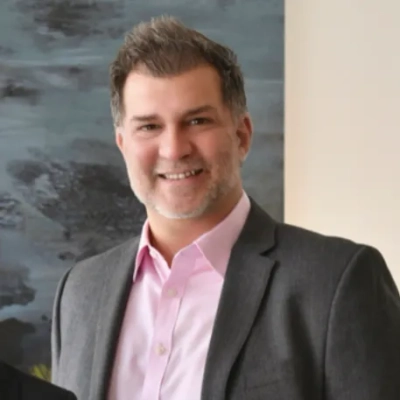18 Strategies to Create Urgency in Advertising
In today's fast-paced advertising landscape, creating a sense of urgency is crucial for driving conversions. This article explores proven strategies to effectively incorporate urgency into your marketing campaigns. Drawing insights from industry experts, it offers practical techniques to motivate immediate action without resorting to pressure tactics.
- Surge Pricing Creates Natural Urgency
- Transparent Time-Limited Offers Drive Action
- Authentic Seasonal Campaigns Boost Conversions
- Quantify Inaction Costs for Immediate Results
- Target Pre-Launch Anxieties to Sell Services
- Consistent Deadlines and Added Value Motivate
- Empowered Urgency Inspires Without Pressure
- Specific Time-Bound Promises Increase Conversions
- Rolling Deadlines Leverage FOMO Psychology
- Personalized Timers Enhance Offer Relevance
- Align Urgency with Customer Event Calendars
- Connect Urgency to Real Homeowner Risks
- Time-Limited Offers Tap into FOMO
- Cultural Moments Drive Immediate Engagement
- Simplify Choices to Accelerate Decisions
- Expiring Bonuses Flip Loss Aversion
- Announce Sales Ending Soon Everywhere
- Subtle Inventory Wording Suggests Scarcity
Surge Pricing Creates Natural Urgency
One strategy we leaned into was SURGE PRICING TRIGGERS—a method borrowed from rideshare apps but applied to digital offers.
Instead of blanket discounts, we'd raise or lower pricing in real time based on demand signals. For example, if a limited webinar series started filling up, the next wave of registrants would see a slightly higher fee. The psychology here wasn't just about cost—it created a visible reminder that waiting had a consequence. People could literally watch the value of hesitation tick upward.
What we discovered is that urgency works best when it feels NATURAL, not forced. If the audience senses you're manufacturing scarcity, they tune out. But when we tied surge pricing to authentic, trackable signals—like inventory levels, sign-up velocity, or seasonal demand—it sparked action without leaving anyone feeling manipulated. It turned the buying decision into a choice between acting now at today's rate or rolling the dice for later. That element of transparency made the urgency more believable.
Encouraging immediate action, then, came down to honesty paired with visibility. We didn't just say "act fast"; we showed customers the real-time impact of waiting. When people saw the cost nudge upward between a morning visit and an evening refresh, the hesitation vanished. It taught us that urgency isn't about shouting louder; it's about letting people feel the clock moving on its own. That's when urgency shifts from pressure to momentum.

Transparent Time-Limited Offers Drive Action
People act when there is a clear reason to act now. That typically comes from one of two concepts that often get mixed together: scarcity and urgency. Scarcity is about availability, such as limited units, a capped number of slots, or only so many clients you can take on. Urgency is about time, such as an offer or discount that disappears after a set date or event. Both can work, but they trigger action in different ways.
For example, I recently worked with a seasonal home services business. To stay busy during their slow season, we leaned into urgency. Our ad explained that June and July were their slowest months, so they were offering a 20% discount but only until demand picked back up. We framed it as a win-win: customers got the best price of the year, and the business stayed fully staffed to transition smoothly into the busy season. That transparency built trust and created real urgency, and the campaign quickly became their top performer by a good margin.

Authentic Seasonal Campaigns Boost Conversions
The most effective way to create urgency is to tie the offer to time or scarcity in a way that feels authentic, not manufactured.
One campaign that stands out was for a wellness client running vitamin drip treatments. Instead of simply advertising "limited-time discounts," we connected the urgency to seasonality. We launched a "Winter Immunity Boost" campaign and framed it around the flu season, offering a package deal that expired at the end of the month. The ads highlighted the relevance of acting now ("Stay strong this winter, offer ends Jan 31"), which felt natural and timely.
What made it work was combining clear deadlines with contextual relevance. The campaign saw a 24% increase in bookings compared to their standard promotions, and many customers mentioned that the "end of month" messaging prompted them to finally try it.
The key insight for me is that urgency works best when it doesn't feel forced—it has to connect to something meaningful for the customer.

Quantify Inaction Costs for Immediate Results
One of the most effective strategies I've implemented is using data-driven messaging in our PPC campaigns that specifically highlights the cost of inaction. For example, we show prospects exactly what they're losing - like missing out on 47 potential customers every day without proper SEO implementation. This approach works because it transforms abstract concerns into concrete numbers that directly impact their bottom line. When people see the real financial impact of waiting, they're much more motivated to take immediate action.
Target Pre-Launch Anxieties to Sell Services
I've found that creating authentic urgency comes from deeply understanding your audience's timeline-specific pain points rather than using artificial scarcity tactics. When marketing our brand messaging service, I specifically addressed founders' pre-launch anxieties by offering to help them nail their homepage headline before their product launch began. This targeted approach to a genuine pressure point resulted in our service slots selling out within days. The key was connecting our solution to a real deadline in our customers' lives rather than manufacturing urgency through countdown timers or limited-time offers.

Consistent Deadlines and Added Value Motivate
The secret is CONSISTENCY — when we say a deal ends Friday at midnight, IT REALLY ENDS. Customers get to take us seriously, and that gravitas means they act more quickly the next time. Another strategy I like to use to encourage action now is to stack urgency with added value. For example, giving a bonus (such as free shipping or a free extra) but only to those who act in the first two days. That scarcity and reward combination is not only a motivator to act quickly but makes the customer feel like they acted wisely, not under pressure.
Moreover, I've found that creating urgency is effective when attaching the offer to something meaningful, such as inventory levels, seasonal or trend-related, or a clear deadline that will genuinely not come back again. For example, when we ran a campaign for a client on limited-edition products, you would never see "limited time offer." We displayed exactly how many units were remaining, and when they were gone, we never replenished. That authenticity delivered a 25% higher conversion rate in comparison with our earlier "sale ends soon" messaging.

Empowered Urgency Inspires Without Pressure
URGENCY GROUNDED IN CARE
I've discovered that urgency works best when it feels like an invitation, not pressure or force. I call it Empowered Urgency — it's the idea that you want to inspire people to act now while completely leaving the decision up to them. In our sauna business, I've observed how much more successful it is to tie urgency to personal results rather than gimmicks. For example, instead of touting "flash sales," we highlight what someone could begin to feel in the moment: relief from sore muscles or clearer breathing through heat-and-breathing exercises or even just a calmer mind after a stressful day. Putting it this way, the urgency is around their benefit, not us trying to close a transaction.
One way I've accomplished this has been by incorporating the message of the day. During the winter, I'll remind my clients that they can go to sleep that same week feeling a difference in their bodies after a few sauna therapy sessions. Such a facile, time-specific framing makes an intuitive "why wait?" without sounding desperate. People respond because the advantage is immediate, tangible and accessible. It's urgency grounded in care — and it's what makes all that action feel like the most obvious next step.

Specific Time-Bound Promises Increase Conversions
One strategy I've found highly effective for creating urgency in advertising is using time-bound specific promises in our calls to action. When we tested changing our CTA from a generic "Sell Your House Fast" to the more specific "Get Your Fair Cash Offer Within 24 Hours," we saw our conversion rate nearly double. This approach works because it combines a concrete timeframe with a clear value proposition that addresses the customer's primary concerns - in this case, speed and fair pricing. The specificity and credibility of the promise motivate immediate action far better than vague statements or general urgency.
Rolling Deadlines Leverage FOMO Psychology
Over 60% of online shoppers say that they make a purchase simply because they fear missing out. This is not impulsive behavior; it's psychological leverage.
One technique I've used to add urgency is what I call "the rolling deadline." Rather than just using a single timer or a simple "limited time offer," I have created dynamic, rotating windows. For example, "Only 3 spots left for this week's batch of coaching" or "Next shipment closes in 48 hours." By putting the offer in motion, it feels alive, and while the offer is moving, a person is now forced to take action—rather than consider taking action.
What makes it believable is that consumers can always tell when urgency is contrived. However, when they witness real-time updates, limited availability, or necessarily need a clear next step, it feels as though they've stepped into a fast-moving river versus staring at a static ad.

Personalized Timers Enhance Offer Relevance
One strategy I've found very effective for creating urgency in advertising is combining limited-time offers with real-time personalization. Instead of just saying "Offer ends soon," I use dynamic email or ad content that updates based on the user's behavior and timing. For example, if someone opens an email late in the campaign, the content might show "Only 12 hours left to claim your spot," with a live countdown timer embedded. This feels more authentic than a generic deadline because it adapts to the moment the customer sees it.
I also connect urgency to relevance, not just scarcity. For B2B campaigns, I highlight what the customer could miss out on if they delay—like losing an early-access bonus, falling behind competitors, or missing a seasonal opportunity. Pairing this with strong social proof (such as "250 businesses already signed up this week") adds credibility and nudges faster decision-making.
Finally, I keep the action step extremely clear—using short CTAs like "Start Free Trial Today" or "Book Your Demo Now." The mix of time pressure, relevance, and clarity encourages people to act immediately rather than putting it off.

Align Urgency with Customer Event Calendars
Instead of relying solely on flash sales or low-stock warnings, we align our advertising with our customers' personal calendars. Our products are often used to prepare for specific events, so we frame the purchase as a necessary step in their planning process.
For example, our waxing kit ads leading into summer or spring break focus on 'getting vacation-ready'. The deadline isn't our sale ending; it's their flight taking off. This makes the call to action feel less like a sales tactic and more like a helpful reminder to prepare for an important moment. The purchase becomes a solution to an immediate, real-world need.

Connect Urgency to Real Homeowner Risks
In restoration advertising, urgency isn't manufactured — it's real. Water and fire damage only get worse by the hour. One strategy we use is clear, time-sensitive messaging tied to that reality: phrases like "every hour counts" or "mold can start in as little as 24 hours". We back that up with call-to-action buttons and local phone numbers in every ad, encouraging people to call right away instead of waiting. By connecting urgency to real homeowner risks and offering an immediate solution, we've found people are far more likely to take action on the spot.

Time-Limited Offers Tap into FOMO
One strategy I've used to create a sense of urgency in advertising is time-limited offers paired with clear messaging that highlights scarcity. For example, I'll run a campaign that says, "This offer expires in 48 hours" or emphasize limited stock availability. To reinforce the urgency, I often include countdown timers or real-time updates so people can see the window of opportunity closing.
This approach encourages immediate action because it taps into people's fear of missing out (FOMO). When potential customers know they have a short timeframe to decide, they're more likely to act on the spot rather than delaying and forgetting.
- Cordon Lam, Director and Co-Founder, populisdigital.com

Cultural Moments Drive Immediate Engagement
At Ranked, the most effective way we create urgency is by demonstrating that culture moves rapidly, and if you're not part of the moment, you miss it. Instead of generic countdowns or discounts, we highlight real-time trends from creators and frame campaigns around what audiences are already discussing.
One example: we ran a local creator campaign tied to a sports event. By connecting brands to creators in that specific zip code and activating content during the game, engagement spiked immediately because the audience knew the moment would not last.
The key: urgency works when it feels cultural, not forced. We encourage action by meeting people where they are, in the moment, with voices they trust.
Simplify Choices to Accelerate Decisions
We have found that focusing on audience psychology delivers better results than using generic scarcity tactics. People often delay decisions when they feel overwhelmed, which creates hesitation. To address this, we build urgency by simplifying choices and presenting fewer but clearer options. This approach makes the opportunity feel both immediate and manageable. When options are straightforward, audiences do not feel pressured but instead recognize the value of acting quickly. Clarity itself becomes the driver of urgency.
To further encourage immediate action, we work on removing barriers that slow down decisions. Simple tools like quick sign-ups or single-click commitments allow people to move forward without second thoughts. The urgency then comes not from artificial pressure but from the ease of taking the next step. When waiting feels more complicated than acting, audiences respond faster and with greater confidence.

Expiring Bonuses Flip Loss Aversion
We use expiring bonuses instead of discounts. The offer stays, but the bonus disappears if they don't act within the time frame. This flips the psychology, as then the buyer feels like they are not losing money; instead, they are losing opportunities.

Announce Sales Ending Soon Everywhere
Hello!
On our website in the announcement bar we put in a notice that there is a sale ending soon. We also send emails out to tell people that if they don't buy that the sale will go away. We really try to hit them over the head with the deal!
Let me know how else I can help!!
Best,
Greg
Subtle Inventory Wording Suggests Scarcity
A very subtle tactic in e-commerce is changing the status of inventory from 'in stock' to 'currently in stock'.






